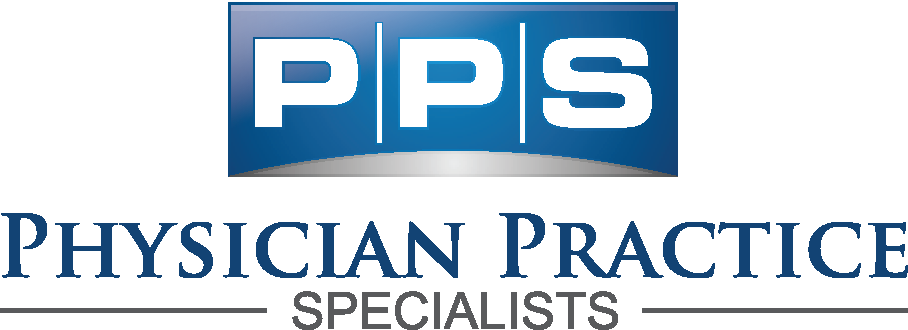6 Roadblocks to Your success as a new practice
Starting a new medical practice is incredibly challenging but more than just starting, opening a thriving medical practice may seem impossible. The truth is, you don’t have to count on your first 2-3 years being a struggle. The key to your success as a new practice really hinges on you spending the time need to lay the foundation for success. There is a lot at stake and you need to treat it as such. In this article, we have identified 6 hurdles to your success and 6 defining characteristics of a successful practice. These are some of the most common roadblocks you could encounter on your journey towards success.
1. Competition:
Competition can be intense in the healthcare industry, so it’s important to differentiate yourself from other providers and find a unique value proposition. Understanding your competition prior to selecting a location and practice type is imperative which is why we always recommend doing a market analysis.
Some specific benefits of conducting a market analysis before opening a new medical practice may include:
- Identifying underserved patient populations or gaps in healthcare services within the local market.
- Understanding the competition in the market and how to differentiate your practice from others.
- Identifying opportunities for strategic partnerships and collaborations with other healthcare providers or organizations.
- Understanding the regulatory and financial environment within the market, including reimbursement rates and other financial factors that may impact the success of the practice
- Get Your Location Market Analysis Today
2. Reimbursement:
Changes in insurance policies, reimbursement rates, and other financial factors can significantly impact the success of a medical practice. Insurance reimbursements have declined substantially over the past 5 years as a percentage of costs. This means that every new practice needs to be particularly judicious when signing their payer agreements.
Establish a cadence for reviewing payer agreements for negotiation opportunities. Insurance companies are making billions of dollars every year in profit and a lot of this is due to squeeze that has happened for the smaller practices. Utilize the Medicare fee schedule tool to analyze your various payer agreements to ensure a migration to a new Medicare fee schedule doesn’t hurt your revenue. Payers love to offer “budget neutral” moves but their idea of being budget neutral typically means paying you less when Medicare starts paying you more.
Conduct monthly audits on receivables to ensure all payers are reimbursing based on their agreement.
Ensure your credentialing procedures and team are prepared for your hiring/growth plans and that you are regularly reviewing denials for any credentialing related issues. It’s great to hire three new providers but many practices do this without the proper forethought required as it relates to credentialing. Credentialing timeframes vary by payer and state but you should try to give yourself 4-6 months to complete the credentialing process. Failure to do this will likely result in lost revenue, reduced profit and patient frustration due to out of network billing.
Conduct a bi-annual (at minimum) strategic review of the payer landscape to ensure you are not caught off guard when a payer leaves the market or a new payer enters and captures substantial market share. One of the best ways to do this is to regularly consult with your referral partners to ensure you are in alignment with their payer strategy.
3. Regulatory Requirements:
Healthcare regulations are complex and constantly evolving, so it’s important to stay up-to-date and comply with all requirements.
-
Obtain the necessary licenses and permits: Depending on the type of medical practice and the state or jurisdiction in which it is located, there may be various licenses and permits required to operate legally.
-
Adhere to healthcare regulations: Healthcare regulations can be complex and constantly evolving. It’s important to stay up-to-date with the latest regulations and requirements related to patient care, medical record-keeping, and other aspects of practice management.
-
Implement policies and procedures: Developing and implementing policies and procedures can help to ensure compliance with regulatory requirements and promote consistent, high-quality care. Download our Policy Procedure Handbook
-
Manage controlled substances: If the medical practice will be prescribing or dispensing controlled substances, it is important to adhere to strict regulations related to drug management, prescribing, and record-keeping.
-
Participate in quality reporting programs: Participation in quality reporting programs such as the Merit-based Incentive Payment System (MIPS) can be an important aspect of regulatory compliance and may be required to maintain reimbursement from certain payers.
4. Staffing:
Finding and retaining skilled and reliable staff can be challenging, especially in a competitive job market. It is often necessary to be creative when staffing including looking at outsourcing some office functions to limit payroll expenses.
-
Offer competitive compensation and benefits packages: One of the most effective ways to attract and retain high-quality staff is by offering competitive compensation and benefits packages. Additionally, it’s important to regularly review compensation and benefits packages to ensure that they remain competitive and aligned with industry standards. You don’t want to invest in training someone only to have them leave to your neighbor.
-
Provide opportunities for professional growth and development: Offering opportunities for professional growth and development can help employees feel valued and invested in the success of the practice. By investing in the development of staff, the practice can build a strong and loyal team of employees who are motivated to stay long-term.
-
Utilize technology and outsourcing: Another strategy for reducing staffing costs is to utilize technology and outsourcing to automate administrative tasks and reduce the need for full-time staff. This can include using practice management software to streamline scheduling, billing, and other administrative tasks, as well as outsourcing tasks like medical billing or credentialing to professional service companies. By leveraging technology and outsourcing, the practice can keep staffing costs down while maintaining efficient operations.
5. Technology:
The healthcare industry is increasingly reliant on technology, and practices that fail to keep up may struggle to stay competitive. It is imperative that new practices utilize technology to improve productivity and efficiency to enhance profitability. Failure to do so will squeeze margins and increase the risk of failure.
-
Electronic Health Record (EHR) system: An EHR system is a digital record-keeping system that stores patient health information and can help streamline patient care processes, reduce administrative burdens, and improve patient outcomes. It can also help with regulatory compliance and facilitate interoperability with other healthcare providers.
-
Practice management software: Practice management software can help manage administrative tasks such as scheduling, billing, and patient communications. It can also provide valuable analytics and reporting capabilities to help track performance and identify opportunities for improvement.
-
Telemedicine solutions: Telemedicine solutions enable healthcare providers to deliver care remotely, through virtual consultations or remote monitoring. This can help improve access to care, reduce costs, and improve patient outcomes.
-
Patient engagement tools: Patient engagement tools such as patient portals, mobile apps, and patient education resources can help improve patient communication, satisfaction, and outcomes. They can also help with regulatory compliance and enable patients to take a more active role in their care.
-
Medical devices and wearables: Medical devices and wearables such as blood pressure monitors, glucose meters, and activity trackers can help patients manage their health conditions and provide valuable data to healthcare providers. They can also help improve patient outcomes and reduce healthcare costs.
6. Marketing:
A poorly conceived marketing plan will limit growth and allow competitors to gain/retain market share thus limiting your opportunities for growth. If you’re not growing then you’re dying, how quickly your competitors grow will determine your lifespan. If you have a poor website, no reviews, no brand awareness, poor customer service, no differentiators, etc.., think about how easy it would be for someone to come into your corner and immediately start siphoning away your market share. We have included a few articles below that would be worth a view. One in particular is our Best Ways to Attract New Patients. In this article, we review the top articles featured on Google and identify the fluff vs what would actually produce results for you. We also encourage you to take a look at our marketing and web design services if interested in having us help.
-
Define your target audience: The first step in developing an effective marketing strategy is to define your target audience. This can include factors such as age, gender, location, medical needs, and other demographic or psychographic characteristics that are relevant to your practice. By understanding your target audience, you can tailor your messaging and outreach efforts to reach the right people with the right message.
-
Develop a strong brand identity: Your practice’s brand identity should reflect your mission, values, and unique value proposition. This can include things like your logo, website design, marketing materials, and overall messaging. A strong brand identity can help differentiate your practice from competitors and build trust and credibility with patients.
-
Leverage digital marketing channels: In today’s digital age, it’s important to have a strong online presence and utilize digital marketing channels to reach patients. This can include things like search engine optimization (SEO), social media marketing, email marketing, and paid advertising. By leveraging these channels effectively, you can reach a wider audience and build your practice’s reputation online.
-
Measure and optimize your marketing efforts: To ensure that your marketing efforts are effective, it’s important to regularly measure and optimize your campaigns. This can include tracking key performance indicators (KPIs) such as website traffic, conversion rates, and patient acquisition costs. By analyzing this data, you can identify areas for improvement and make data-driven decisions to optimize your marketing strategy over time.
6 Defining Traits of a successful medical practice
We’ve discussed the most common roadblocks to your success, we now want to paint you a picture of what successful practices do well. We’ve identified six high-level keys to your success which if employed in your business, will yield positive results. Our mission is to help you become successful so if you’re finding some of these strategies difficult to implement, please don’t hesitate to schedule a consultation to see how we can help.
-
Patient-Centered Care: A focus on providing personalized, high-quality care that meets patients’ needs and expectations. Keep the main thing the main thing. Remember why you opened your medical practice. Yes, you need to make money but if you take care of the patients then the money will come.
-
Efficient Operations: Streamlined processes and effective use of technology to maximize productivity and reduce costs. Efficient operations is also key to you being a business owner vs being self-employed. Delegation within your business will be paramount if you want to have a life outside of work.
-
Effective Marketing: A well-crafted marketing plan that targets the right audience and effectively communicates the practice’s unique value proposition. Think of marketing as the engine of your success and growth. Fuel is money and time, if you don’t have the time, then spend the money. Regardless of how you get there, an effective marketing strategy/campaign is essential to your success.
-
Positive Patient Experience: A welcoming and comfortable environment, compassionate staff, and effective communication to ensure patients feel heard, understood, and valued. Poor patient experience equals fewer referrals, bad reviews and ultimately a crippled practice.
-
Financial Management: Effective financial planning, management, and reporting to ensure profitability and stability. If finances and budgets aren’t your strong suit or if you don’t have the money to hire a CFO/administrator, then contract with a CPA to provide bookkeeping and monthly reporting.
-
Staff Development: Ongoing training and support for staff to improve performance and promote staff satisfaction and retention. You will rise and fall based on the ceiling and floor of the team you have built. Every new hire should elevate your practice to new heights.
Overall, the success of a medical practice requires a combination of effective management, skilled staff, excellent patient care, and a willingness to adapt to changes and overcome challenges.
Article Updated: 04/15/2023
Lean Start-Up Method for New Medical Practices
There are very few things when starting a new practice that we would identify as.... [Read more]
May
How to Select the Best Location for your New Medical Practice
As we all know, selecting the right location for your new medical practice is critical.... [Read more]
Aug
How much does it cost to start a medical practice?
In this article, we define some of the costs of opening a medical practice. Whether.... [Read more]
May
New Practice Resources
Free downloads and resources available to new practices.
- Practice Start-Up Checklist Versions A & B- Download
- Practice Employee Handbook- Customizable 50+ page handbook available for purchase. 50% off for new practices. Contact us for download
- Medicare Enrollment Tutorials and Guidance
- Medicare Wellness Forms
- Physician Employment Agreement-Free Download (You need to be sure the noncompete is compliant with your state regulations)
- 50+ page OSHA Handbook Download
- Practice OSHA Safety Plan Practice Kit- Download
- OSHA Workplace Injury Form
- HIPAA Sharing of Information Notice
- Checklist for Sharps Injury Prevention
- Notice of Privacy Practices
- HIPAA Release Form
- HIPAA Privacy Assessment Checklist
- Medicare Bank Letter Template





